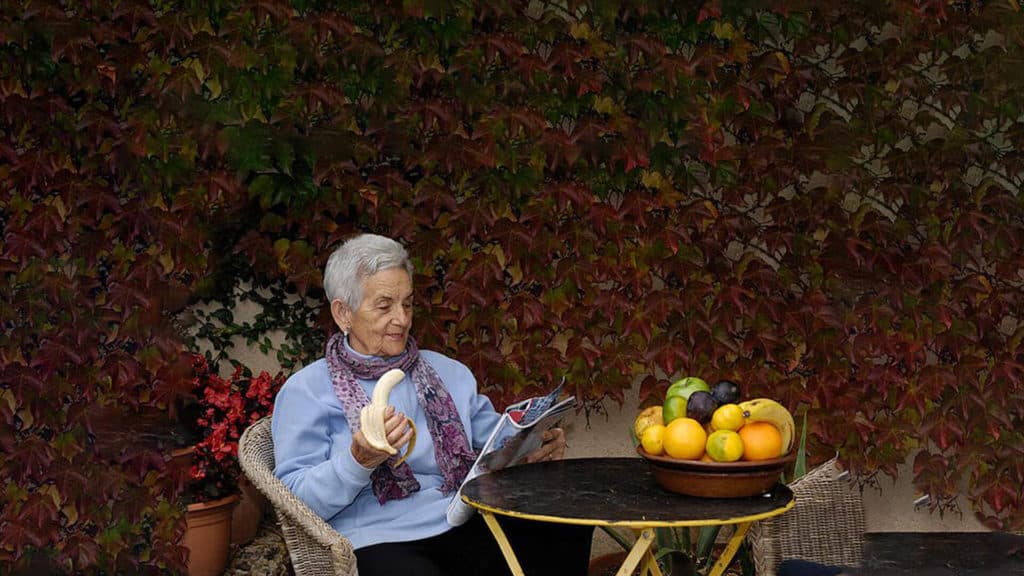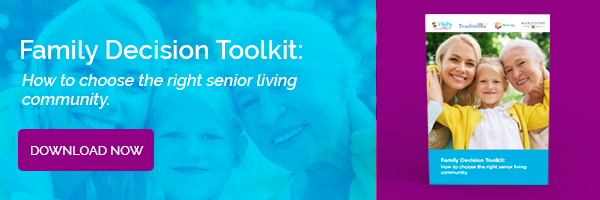When it comes to aging, language matters. The words we use to describe and label older members of society reflect our vision of their capabilities as well as their contributions. The descriptors with which we identify our parents and grandparents says a lot not only about them, but about us too.
At Vitality Senior Living, we consider it important to use language that shows our respect and appreciation for older adults. You will note that we avoid terms such as “elderly” and “aged.” As it turns out, even the neutral-sounding term “seniors” is on the decline. One news report indicates that 50.8 percent of older adults surveyed said they were not comfortable with that term.
“Senior” sounds relatively benign, but it comes with baggage, as one New York Times reporter discovered when she interviewed older people about their preferred nomenclature. “Senior citizens is a term coined in the late 1930s for people who needed a place to go, senior centers, to have a good lunch. To me, it implies somewhat impoverished older people, not the way people want to think of themselves,” said one interviewee.
In a blog post on Next Avenue, San Diego State University Professor Emeritus E. Percil Stanford notes, “The moniker ‘senior citizen’ tends to cast a shadow that suggests a ‘less-than’ quality, particularly one of dependence. The ‘older person’ should be a symbol of strength and a repository of treasured experiences and wisdom.”
What’s really the issue when we talk about language and the names we give to groups of people? It’s not just about the words but about the ideas behind the words.
An Important Part of Life’s Journey
A natural part of life, aging is an organic transformation bound into the human experience. When we label older people, it sometimes is a reflection of society’s efforts to cut off that experience. Seniors become those people, the ones we don’t want be, and so we give them a separate name, their own designation.
But language can have just the opposite effect. We can choose words that suggest joy, vitality, energy, and continued creativity. We can craft a vocabulary that embraces and celebrates the natural process of aging. For instance, aging? Perhaps we should say evolving, growing, expanding upward through life. See? There are ways to talk about ourselves that actually help us recreate ourselves.
Why does it sometimes seem difficult to find the right words? Per a respondent in the aforementioned New York Times article, “What’s going on is we have a problem with the subject itself. Everyone wants to live longer, but no one wants to be old.”
At the same time, there’s just something a little facile and silly about insisting that grandma is “89 years young!” Language must be kind and should be encouraging, but it also has to be honest.
The Rise of “Older”
That’s why terms like “older person” and “older adult” have become increasingly accepted by those who have achieved greater years. Caregivers, housing communities, and journalists are coming around to this terminology too.
First of all, it’s honest. Everyone is older than someone, by definition. It’s a factual representation of this individual’s status and achievements. Yes, longevity is an achievement. Simply making it this far merits recognition and respect. Older than I was, older than most of the people around me—older.
Terms like these also seem, so far at least, to be cheerfully free of the stigmas that accompany labels like “elderly,” with its implications of physical incapacity and mental degeneration. It would seem incongruous for your “elderly” aunt to take a spin class, but a bunch of older people getting together to pursue physical wellness and mental stimulation—that makes perfect sense!
Maybe there was a time when “elder” was uttered in tones of hushed reverence — the village elders. Not so anymore and likewise with “seniors.” How ever well intended, the term now seems to reflect dusty bingo halls. These words are antiquated. They are, to use another antiquated word, geriatric.
Older adults are the wisest living generation. They have contributed a great deal and are still learning and growing. They have gotten this far (no small trick!) and remain an important part of our families and society. When we embrace a new terminology, we make room for people to be who they are and express themselves in new and vibrant ways, unhindered by the stigma of labels that no longer apply.




